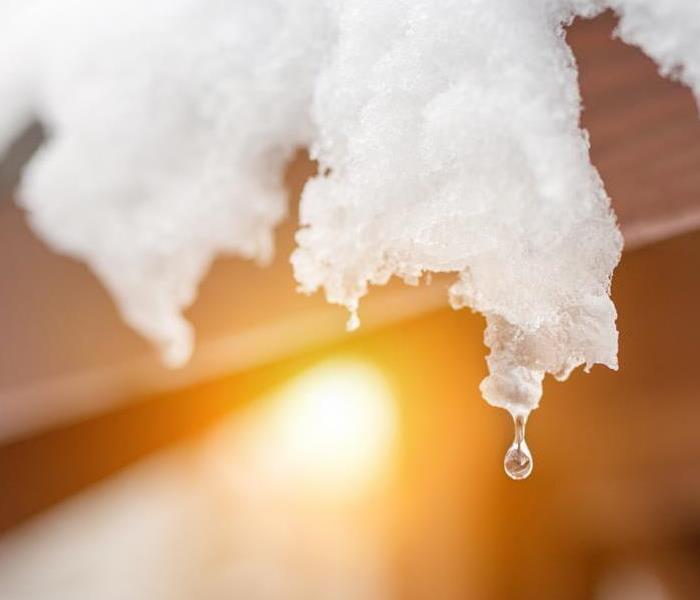Ways To Prepare for a Spring Thaw
1/13/2022 (Permalink)
 Keep these tips in mind as you prepare for the Spring Thaw in Greenville, NC. If any doubt arises, please contact us.
Keep these tips in mind as you prepare for the Spring Thaw in Greenville, NC. If any doubt arises, please contact us.
When the frigid temperatures in Greenville, NC begin getting warmer, the snow and ice that has been on the ground will eventually melt. The water has to go somewhere, and you don't want it to invade your commercial building. Flooding is a real possibility of meltwater developing when a great deal of snow and ice thaw relatively quickly.
You should take various actions outdoors that can help prevent water from intruding into the building. However, you will also need to prepare the inside of your facility for the possibility of a spring flood.
When you're preparing for a spring thaw, one of the most crucial actions you can take is inspecting your sump pump to ensure it is working correctly. A good sump pump can mean the difference between incurring minor or even no water damage and sustaining a significant loss if you have a water intrusion. Even a relatively small amount of water that isn't immediately removed will require the assistance of a flood damage restoration company.
Perform Outdoor Maintenance
As you prepare for the spring thaw, you should be mindful of several aspects, especially if your landscape is more elevated than your building. Taking care of the outdoors will help prevent problems indoors.
1. Check the Slope of the Ground
The grading of the land around your building can significantly impact the amount of water that accumulates around the structure. The ground should slope so that water will flow away from the lowest floor of the building.
2. Remove Snow and Ice from the Foundation
Snow that is packed against the building can saturate the ground around the foundation. This accumulation can eventually result in flooding. Moisture can seep through even the tiniest cracks in the foundation. Try to shovel the snow and ice as far from the building as possible (at least three feet away) to ensure it's far enough out as it melts.
3. Inspect for Cracks in the Foundation
After removing the snow next to the building, inspect the foundation for cracks. If you notice any, play it safe by contacting foundation waterproofing professionals.
4. Clean Gutters and Downspouts
Ensuring all of the building's gutters and downspouts are clear is a significant part of keeping water out of the inside of the structure. Also, make sure the downspouts are directed away from the building properly. Even if you don't have the leaves and debris as much as the other times of the year, snow and ice can refreeze in them and cause a buildup. This could cause a deluge of water to accumulate around your building when it melts.
Whether flooding results from melting snow and ice or a bursting frozen pipe, it can cause a significant loss. It's vital to know how to prepare for a spring thaw. It's also beneficial to learn the signs that water has begun invading or determine if there is a significant risk beforehand. Plan on following these tips well before the warmer weather arrives so you can be ready for a potential issue. In the meantime, review your building insurance to ensure it covers everything you need.




 24/7 Emergency Service
24/7 Emergency Service